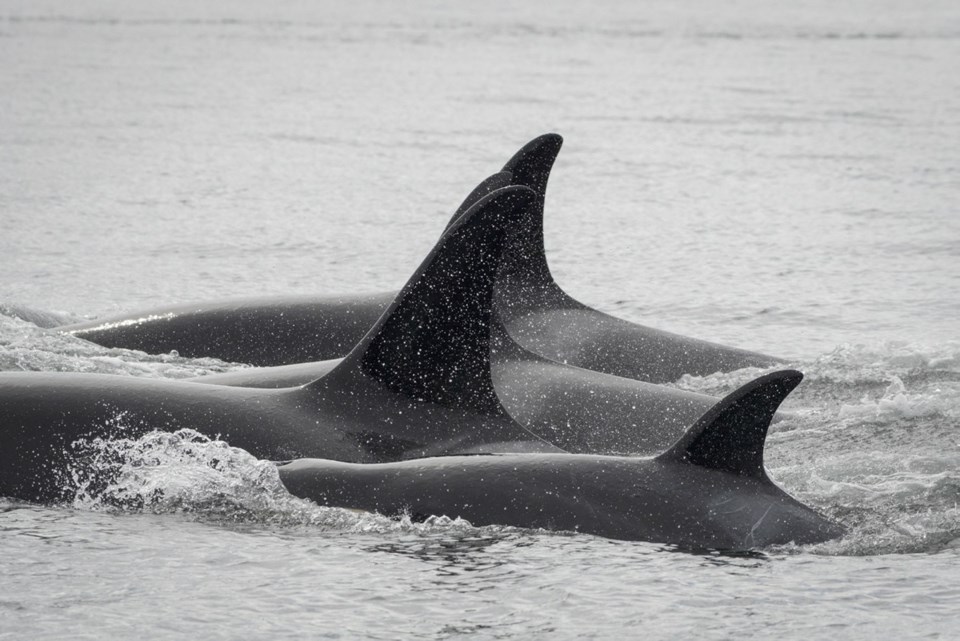Canada and U.S. officials are considering the capture of an emaciated female killer whale if she becomes stranded on a beach or separated from the rest of her pod.
Officials insist that the step would only be taken as a last resort in order to save the life of the ailing three-year-old orca known as J50 or Scarlet. The goal, they say, would be to treat her and release her back to the wild as soon as possible.
“We won’t do anything that has the potential to negatively affect her family unit,” said Chris Yates of the National Oceanic and Atmospheric Administration in the United States.
“And everything we will do will be to have her survive so that she can be in the wild and contribute to the southern resident killer whale recovery.”
The Department of Fisheries and Oceans said in a statement that, in the event of a capture, veterinarians and other experts will assess J50 in the field to determine if she requires human care for a limited time. If so, J50 might be transported to a location where diagnostic and treatment equipment is available, the agency said.
“If it is determined that J50’s illness is not treatable, she would then be returned to J-pod to spend the rest of her natural life with her family.”
The proposal is already drawing criticism. Peter Hamilton of the Lifeforce Foundation said it’s “almost unimaginable” that officials would think of capturing J50 after another member of the pod carried around the carcass of her dead calf for two weeks.
“This is a family that has just gone through 17 days of mourning the loss of another one of their family members,” he said. “So to take J50 away from the family in an attempt to try to help her, which is no guarantee, is certainly inhumane.”
The health of J50 and her reproductive potential are considered crucial for the recovery of endangered southern resident killer whales, whose numbers have dwindled to 75 in three pods.
Researchers have been monitoring J50 since noticing her emaciated state this summer.
An international rescue team has twice used a dart to inject the whale with antibiotics, but her condition appears to be worsening and she sometimes lags behind her mother and the rest of their pod.
Joseph Gaydos, a wildlife veterinarian with the SeaDoc Society in Washington state, observed J50 last Friday and was startled by her condition.
“The thinnest killer whale that I’ve ever seen,” he said. “But, at that same time, she was still keeping up with her brother. Her mother was in the area.
“She was like this little Energizer bunny that just keeps going and going, and definitely captured our hearts.
“But I don’t want to leave you in any false hope. This is a very sick whale.”
The research team still hopes to inject her with de-worming medication to treat a possible parasite, said Lynne Barre, a southern resident killer whale recovery coordinator with NOAA.
“But, at that point, if we’re successful we believe we’ve exhausted our reasonable, remote treatment options,” she said.
Barre said officials have been consulting experts and field teams to put plans and staffing in place for a possible capture.
She and a number of experts on the team took part in the successful rescue of an ailing northern resident killer whale in 2002. The female whale known as Springer was treated for a month in a netpen in Washington before being released in Johnstone Strait.
Springer went on to have a calf and was spotted last summer with a second newborn off the B.C. coast. She is the first known case of a whale being captured and successfully returned to her pod in the wild.
In the event of a capture, Gaydos said the rescue team has developed a possible diagnostics and treatment plan for J50 that would include everything from blood work and a hearing test to performing an ultrasound and inserting an endoscope down her throat to check her insides.
“If we were to put an endoscope down and she has five plastic bags in her stomach, that’s a pretty straightforward procedure that’s been done many times to remove those sorts of things,” he said.
If it is something more serious, such as a congenital malformation that requires surgery, the team would have to weigh the risk of success against the stress that would place on a sick animal. “I think there’s always a chance we could be faced with making a diagnosis that could not be corrected,” he said. “Right now, everything in the book is possible, because we really don’t know what’s going on with her.”



